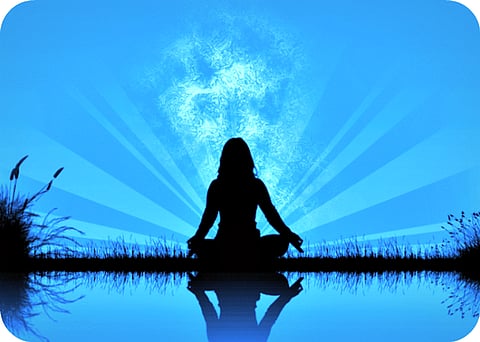
- Home
- न्यूजग्राम
- India
- World
- Politics
- Entertainment
- Culture
- Lifestyle
- Economy
- Sports
- Sp. Coverage
- Misc.
- NewsGram Exclusive
- Jobs / Internships

By Shonu Nangia
As the world celebrates Yoga Day, it is worth revisiting the question, "What is Yoga?" While there are many benefits that accrue from doing yogasanas or postures, yoga is much more than just asanas. It is a method of going beyond the limitations of the body, of staying happy and being steady. It is a cultivation of the art of keeping a calm, alert and happy frame of mind which paves the way for success in life. Derived from the Sanskrit root word yuj, yoga means union. At least 5000 year old of knowledge that originated in the Indian subcontinent, yoga is now universal. It has been proven as an effective practice for a healthy and happy lifestyle and encompasses postures, breathing exercises and the exploration of the deeper parts of one's consciousness through meditation.
Over the centuries, the ancient practice of yoga has found diverse definitions and expressions. The purpose however remains essentially the same: to go within. It's a technology to harmonize body, breath, mind, intellect, memory and ego with our innermost core. The earliest mention of yoga is found in the Rig Veda, which dates back to over 10000 years. Ancient texts of yoga give us definitions that are indicative of the depth that yoga can give one's personality.
Recently, I came across a quote by a teacher of wisdom and an eminent yoga personality, Sadguru Jaggi Vasudev, that grabbed my attention. It said, "All the problems on the planet can essentially be reduced to one thing: misaligned human beings, misaligned with all there is."
As I pondered over this observation, it led me to a personal insight – – that there are three specific kinds of harmony essential for our lives to be pleasant. The first kind of harmony that we need in our lives consists of environmental harmony. Our environment is made up of things and influences that are physically external to us but have an impact on our mind and body. Environmental harmony especially presupposes a relationship with the air, food, water, space and sound around us that is conducive to our physical and mental wellbeing. To whatever extent those elements in the environment do not agree with us, to that degree this makes life unpleasant.
The second kind of harmony that we need for a pleasant life is interpersonal harmony. We need agreeable interpersonal relationships and exchanges with other fellow humans. Our senses receive stimuli, wanted and unwanted, not just from the ambient environment but also from other individuals we interact with and the quality of these interactions has a great bearing on how we experience our life.
The third kind of harmony that we need to live a pleasant life is inner harmony, a sense of inner happiness and joy. Inner comfort and inner fulfilment are an actualization of one's higher potential. When it is there, this harmony translates into a certain ease of being in the world. This inner state of harmony characterizes itself as a stress-free mind, an unprejudiced and clear intellect, a memory that is free of emotional wounds, an ego that is expansive enough to be supple and inclusive, and a loving temperament — among other things.
This third and most intimate level of harmony is actually the most essential one because it is the prerequisite for the other two kinds of harmony, the lack of which is the cause of the great human misalignment which is at the root of all problems like violence and conflict. All other external harmonies proceed from this inner harmony.
The Patanjali Yoga Sutras define the art and science of yoga as yoga chitta vriti nirodha, the cessation of thought currents in the mind, which frees our being.
The saying that "every child is a yogi and every yogi is a child" is true in the sense that yoga takes a practitioner back to the freshness, joy, love, friendliness, simplicity, naturalness and enthusiasm that we are all born with but lose as we grow older.
Thus, yoga is the science of uniting within to bring out the best positive qualities latent within us, qualities that are a part and parcel of our own highest nature. All these definitions point to yoga as a process of self-discovery and as a technology to reach one's highest human potential.
As the 2015 summer solstice ends, and as more and more people on Earth awaken to the need to create a better, happier and more harmonious tomorrow for all everybody, I leave readers with two inspirational messages, one from Indian Prime Minister Narendra Modi, who on the occasion of World Yoga Day tweeted, "How can we understand each other if we don't understand ourselves?" and the other from global humanitarian Sri Sri Ravi Shankar, whose brief message on the United Nation's International Day of Yoga was simply this: "Yoga helps a human being to unfold his full potential. Yoga improves the quality of life, which is so much needed today. Yoga can wipe the tears and bring smiles on every face. It can bring celebration and skill in everyone's life. So let's celebrate this World Yoga Day with zeal and enthusiasm and reach out this precious, ancient knowledge to every human being on this planet."
